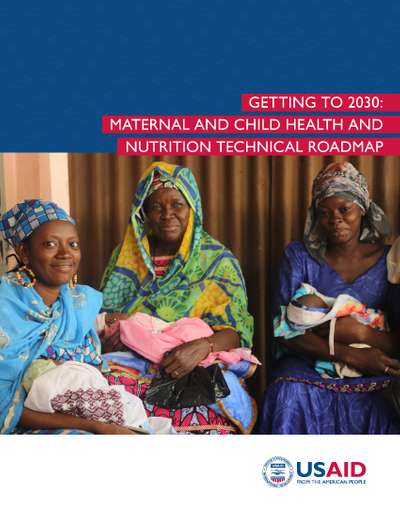USAID Women's Issues Publications Getting To 2030: Maternal & Child Health & Nutrition Technical Roadmap

For more than 50 years, USAID has worked with countries to deliver a wide range of programs and approaches to save the lives of women, newborns, and children. The results have been impressive. The commitment of countries and the generosity of the American people have resulted in significant reductions in maternal, newborn, and child mortality.
The year 2030 is the target date of Sustainable Development Goal 3 (SDG3) to end preventable child deaths—that is, to achieve mortality rates of equal to or less than 12/1,000 for newborns and equal to or less than 25/1,000 for children under five. It is also the target date for reducing the global maternal mortality ratio to less than 70 per 100,000 live births. In addition, the global community has called attention to the need to prevent stillbirths. In many places, progress towards these goals has stagnated and is at risk of backsliding due to emerging shocks and stressors, such as the impact of the COVID-19 pandemic on health systems, economies and livelihoods, as well as on sexual and gender-based violence; climate change; conflict; and many other factors, especially in fragile settings. The United States government (USG) remains committed to Preventing Child and Maternal Deaths (PCMD) objectives (see Box 1). A sense of urgency, renewed commitments, and new tools, attitudes and behaviors now are needed to reach the global goals for women, newborns, and children. Resilience strengthening efforts are needed to prevent or mitigate the effects of shocks and stresses on vulnerable maternal, newborn and child health and health systems, and to facilitate recovery. While nearly one-third of USAID priority countries are on track to meet their under-five mortality targets, deep inequities persist within and between countries. Few are on track to reach their newborn and maternal mortality targets.